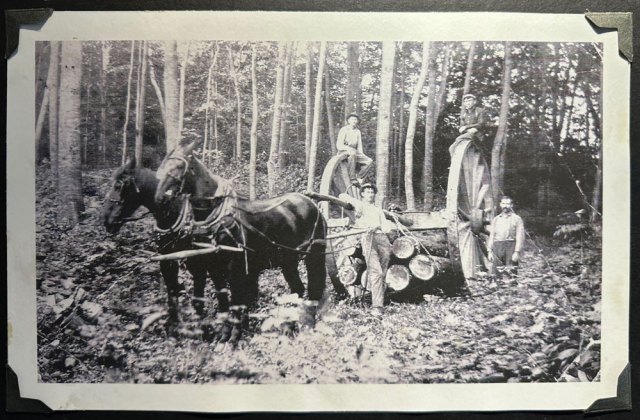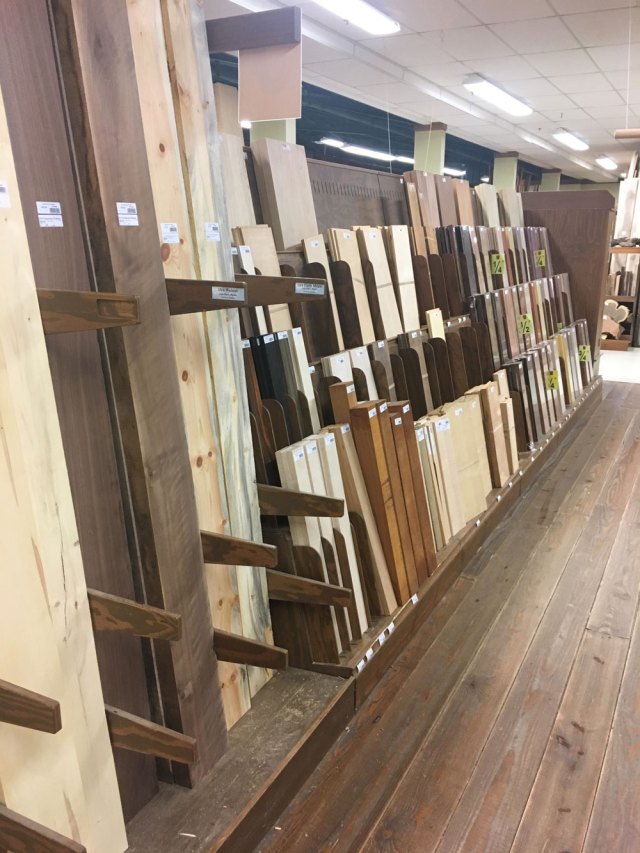
Almost every week – especially during the summer – we get messages from readers who want help with an upcoming trip. They are headed to Kalamazoo, Michigan, and would like a list of woodworking stuff in the area that they can visit.
For me, answering these questions is time-consuming. I have to go back and consult my notes, my blog and my photo library. Then I have to find the websites for these places and write a sentence or two about why this place is important.
Well, I’m not going to answer these questions anymore. Instead, I’m going to send readers to the blog entry you are reading that explains how I research an area for woodworking sites before I visit it.
And we’re also not going to publish a woodworking travel guide. Most published travel guides are for people who are too lazy/clueless/disconnected to do a little research themselves. And we don’t have the resources (or desire) to publish such a guide.
(Apologies if I sound salty. I’m not.)
Note that my woodworking interests are different than yours. I don’t get goo-goo eyes for veneer mills, ornate palace furniture or places that sell only exotic hardwoods. I like to look at furniture made for normal people, old workshops, factories and museums that specialize in vernacular furniture and architecture.
Anyway, here’s what I do before I travel.

House Museums, History Museums & Open-air Museums
This should be obvious. Seach for the name of the place you are going, <place name>, plus the word “museum.” Remember that Americans tend to think of cities as places. Other cultures might think in terms of provinces or regions. Usually this sort of search will call up a lot of the high-class places that feature oil paintings and sculpture. If they have any furniture, it’s likely to be fancy.
And that’s why my next search is <place name> plus “history museum.” Every little town with more than 100 people is bound to have a local history museum. And these hidden gems almost always have furniture pieces that were owned by the founders or made in the area. Plus, the volunteers who work there are almost always a fire hose of information about the area. Searches on the internet don’t always turn up every museum or installation because some of them are too obscure.
Next search: <place name> plus “open-air museum.” Or start here. This list is huge, but most of the open-air museums I have visited are not on it. What’s an “open-air museum?” Typically it’s a place where a bunch of buildings from different eras have been gathered. (Usually the buildings were going to be torn down.) Most times, these building are filled with furniture and wooden decorative objects – spoons, plates, goblets, racks, buckets and on and on.
You get to see pieces in context. A visit to one of these museums can fuel a lifetime of research.
If I’m headed to a big city, I’ll try <place name> plus “decorative arts.” Some museums lower themselves to have a decorative arts wing. And one of the decorative arts is furniture.
Or I’ll look for museums of “farm life” or agriculture.” You might have no interest in farming, but the exhibits will be filled with handmade woodwork. I think you need to see handmade hayrakes and pig benches and dough bowls.
Finally, I’ll look for “house museums.” Sometimes the words “house museums” don’t call up what you want. These places might be called the “Aiken-Rhett House” or the “Nathanial Russell House” (two of my favorites in Charleston, S.C.). Sometimes these house museums are masquerading as a history museum or a museum about a person, such as the Harriet Beecher Stowe House in Cincinnati, Ohio. So when you look for <place name> plus “museum,” scan the list for museums that are the “Fancy Lord & Lass House.” They’ll have furniture. It might be fancy. But they probably also had servants. And their furniture can be quite compelling.
Craft Fairs & Craft Galleries
Most towns and cities have craft fairs and farmer’s markets on the weekends. There you will find woodworkers: carvers, turners and furniture makers. You might also find a blacksmith or two (for hinges, hooks and nails). Go to Germany during November and December, and you’ll find endless amounts of woodworking at each town’s Christmas market. And you’ll find woodworkers to talk to as well.
Antique Malls & Galleries
I love antique malls when I’m looking for tools and oddball furniture ideas. And I love antique galleries when I want to see expensive stuff (even if it is expensive vernacular stuff, like at Robert Young Antiques). Also, if you are going to Europe, look for “folk art” galleries or “art brut” galleries. Over there, “folk art” is not just “art,” it also encompasses furniture and decorative objects. And Europe has a ton of it.
Factories Old & New
I love visiting factories that make furniture, tools and almost anything else (paper, paint etc.). While visiting Holland, Michigan, a few years ago Lucy and I found a lot of old Arts & Crafts factories in the area. Plus the corporate headquarters for Herman Miller. What, they don’t offer tours on the website? Don’t be shy. It doesn’t hurt to walk in, be nice and ask if someone could give you a quick tour. (I’m always happy to give a warehouse tour to visitors who ask.)

Lumberyards & Mills
Another obvious one. If there are interesting lumberyards or mills in the area, I’m going to pay them a visit. And if it’s a mill or a kiln, I’m going to ask nicely for a quick peek or tour. Plus, I just love looking at wood. While at Keim Lumber in Millersburg, Ohio (Amish country), I spent an hour looking at their wood selection. They specialize in domestic species that other mills won’t cut, dry or sell. Have you ever seen Tree of Heaven for sale? They have it.
Silviculture & Forestry
If <place name> has trees or public forests, those are a great way to connect with an area. What sort of trees live here? (I use my “Picture This” app on my phone to explore the different species if they aren’t labeled). Botanical gardens can be awesome, or they can be all about flowers.
If you don’t like walking amongst the trees, you probably haven’t tried it.
Curiosity on the Ground
Most of all, talk to people while you’re at <place name>. Tell them you make furniture. Most people will be fascinated and helpful in your search for things relating to furniture, tools and wood.
I think that the internet is incredibly lacking when it comes to exploring the real world. A smile and an honest question can go a long way.


























